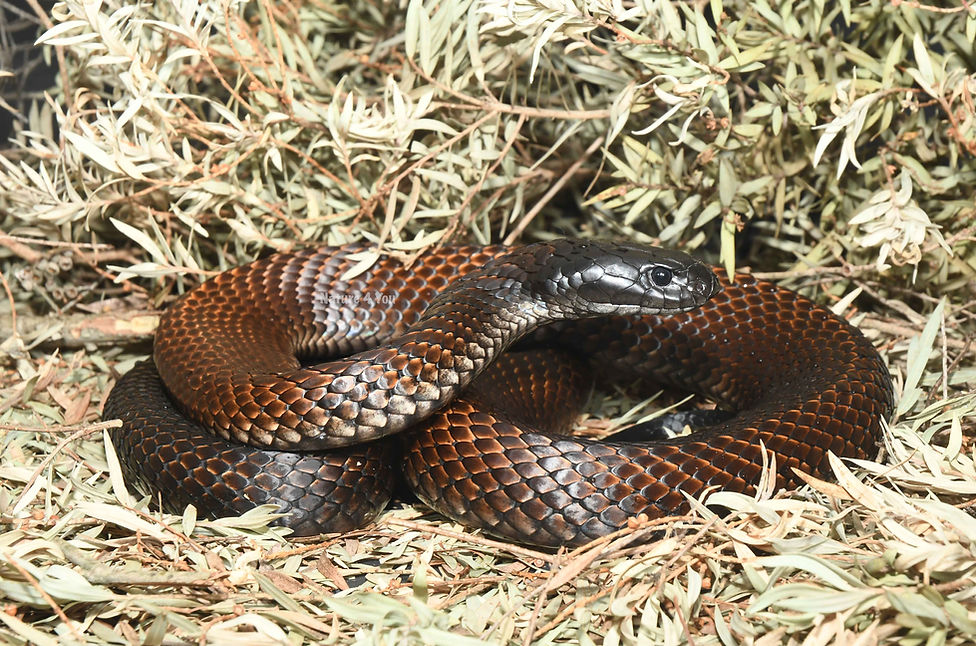
Wildlife Demonstrations, Emergency Consultancy &
Wildlife Management, Photography, Wildlife Books & Giftware
The deadliest snakes in Australia.
The aim of this section of the website is to give some clarity as to how the terms used surrounding Australian reptiles and their potential danger. While historically the terms venom and poison were interchangeable, now used for different types of toxin classified by its delivery mechanism.
There is no doubt about it, Australia is home to some dangerous snakes. But what is the most dangerous Australian Snake?
To begin we need to define a few terms:
Venom – a specialised type of toxin that can cause a physiological injury that is injected via a bite or sting.
Poison - a toxin that can cause a physiological injury that may enter the body via swallowing or inhaling.
Toxungen – a toxin that is released from one animal and on contact the toxin can cause a physiological injury.
Venom yield - the amount of venom that is injected in a typical snake bite.
Ld50 - this is the lethal dose, that kills 50% of the animals in laboratory testing. Most Ld50 experiments use laboratory raised mice. Snake venom is very specific, you can NOT extrapolate the Ld50 from mice to predict the effect on human beings.
Occasionally an animal can be both venomous and poisonous. In snakes, a classic example is the Tiger Keelback Rhabdophis tigrinus. This species has a nuchal gland that stores toxins sequestered from their prey (toads) and is used as an anti-predator system.
Spitting Cobras Naja sp. and Rinkhals Hemachatus hemachatus are both venomous and toxungenous. While they can still bite making them venomous, they can also spit and when the toxin comes into contact with the eye it can cause significant injury.
Many factors can influence the toxicity of the venom of a snake- they can include the species location, the age of the snake, the health of the snake and even the injection site. The injection site for most elapids in subcutaneous due to the relatively short fangs. – Vipers and pit vipers can inject intramuscularly or subcutaneously. While possible, it is very unusual for bite
What makes a snake dangerous?
There are generally five factors used to determine how dangerous a snake is:
1) The toxicity of the venom.
2) The venom yield – amount of venom injected.
3) The efficacy of the venom delivery system- the position and length of the fangs.
4) The disposition of the snake.
5) The likelihood that the snake would come into contact with a person.
While an Inland Taipan Oxyuranus microlepidotus – is the most toxic snake in the world to mice, has a moderate venom yield, its generally fairly even natured and in the wild almost never comes into contact with people. It close relative the Coastal Taipan Oxyuranus scutellatus is less toxic but has a much higher yield, is nervous and found in close proximity to people. Therefore they are much more dangerous to people.
All Australian elapids are venomous. The venom is used by snakes for two reasons first and foremost as a means to subdue its prey and start the digestion process and secondly as a means of defence. Australia doesn't have any poisonous snakes.
The potential lethality of the bite from a snake relates to more than a single factor. Relevant considerations include the toxicity of the species involved, the venom yield, the length of the fang and the temperament of the snake. These factors combine to influence the severity of any given snake bite.
Toxicity of snake venom is often represented by a term called the LD50. This stands for lethal dose, 50%. This LD50 result is determined from injecting test subjects (usually mice) with an estimated sub lethal dose and a larger lethal dose of venom. From these points the dosage is adjusted until a dosage is reached that kills 50% of the test subjects. This number along with the amount of venom usually injected in a bite (the venom yield) can give scientists a comparable prediction on how lethal in people the bite from a particular species could be. What should be remembered is that many snakes have evolved to prey on rodents. This may mean that a species that is not that toxic to rodents may still cause a serious illness in people.
Therefore, if you are bitten by any venomous snake, regardless of the species or size medical assistance should be sought.
The term medically significant venomous snake can be somewhat of a misnomer for people who keep venomous snakes. While the bite of a usually harmless species may not affect the normal person, reptile keepers may have a heightened sensitivity to snake venom from either past bites or even the dust that can be caused from urates or dried venom that could be inhaled in minute quantities while cleaning. In addition, if a member of the general public is bitten by any snake they will almost always seek appropriate first aid measures and in turn go to the hospital where the bite is managed by staff trained to do so. In the case of some snake keepers, they may have the misguided belief that they know better than the medical staff and as a consequence may not apply appropriate first aid measures and or seek out medical assistance.
Hypersensitivity to snake venom can also be problem for some keepers. This can be as serious as having an anaphylactic reaction to a protein within the snake venom. In such cases it will be necessary to manage both the allergic reaction to the snake venom and the effects of the snake venom itself. Some keepers have anti-histamine tablets or a nasal spray for fast absorption and an EpiPen as well as their bandages in their snake bite first aid kit. If you think you may have an allergic reaction to venom you should immediately consult your doctor.
There are four main types of components to Australian Snake venom that cause significant effects in humans. These are:
Neurotoxins
Within neurotoxins there are two main groups.
The first are the ‘presynaptic’ neurotoxins that bind to the nerve ending and destroy the nerve cells. The second are the ‘postsynaptic’ neurotoxins that reversibly bind and block the receptors on the muscle cells thereby preventing the chemical messengers from getting to the receptors. Note that this process does not damage the muscles themselves. It is the neurotoxins that cause symptoms such as ptosis [droopy eyelids], blurred vision and interruption to the smell and taste senses as well as the most serious effect of paralysis of the breathing muscles.
Myotoxins
These toxins destroy muscle fibres. This process can take a long time to recover from. The muscle proteins that leak from the damaged cells can also start to interfere with kidney function and may eventually cause to them to fail [requiring dialysis]. Potassium released from damaged muscle can also cause the heart to stop.
Coagulants
These toxins can disturb blood clotting leading to the risk of fatal bleeding into the brain. Most dangerous are the so-called procoagulants, such as that found in brown snake venom. The toxins can strip the blood of clotting factors leaving the blood unable to clot properly. True anticoagulants, such as that found in Mulga Snake venom, are less common in Australian snakes and are much less dangerous.
Haemotoxins
These cause the destruction of the red blood cells that reduces the capability for the blood to carry oxygen. The broken down cells can then leak into the surrounding tissue and cause extensive swelling and pain. Also the broken down cells can also impair kidney function. This is relatively rare with Australian snake bite.
Recent research has suggested that all Australian Colubrids are also venomous, however only one species may be capable of a potentially serious envenomation. Previously it was thought that the solid toothed Colubrids of the genera Dendrelaphis, Stegonotus and Tropidonophis were completely harmless. It appears that species from these genera venom that is delivered via an unsophisticated apparatus. It is thought the venom enters the victim from the chewing action of the snake. The toxicity of this venom and whether it can have significant effects on humans is largely unknown.
Lastly, in Australia we have some very large constrictors, while they might not be venomous species they can still be dangerous and have been implicated in at least one death locally.
For a list of the most venomous snakes in the world, click on the picture of the Common Death Adder. The venomous snakes found in Australian are in red. This list is complied is by the amount of venom (mg) injected (subcutaneously) per kilo of lab mice.
The venomous snake list is compiled by the snakedatabase.org and the website contains a wealth of knowledge and we urge you to read further. This list is correct at the time of publication (Jan, 2020) and is subject to change.
Top 5 Venomous Land Snakes in Australia
The following information is not meant to instill fear into people, it is here for knowledge and to try to get across the point that these species deserve respect, not death from fear or panic. Bites from these snakes should be taken seriously, not an exercise for more likes on social media. Every situation is unique, every person is different, and you never know what health issues you weren't aware of that could complicate a situation. Like wise, each snake bite is unique- venom yield, the temperature, the species involved, the snakes health and age can all have influence over the outcome. Therefore we hope armed with this information, these snakes will be left alone by the general public.
Inland Taipan
Oxyuranus microlepidotus
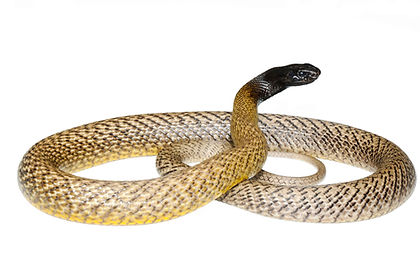

Also known as Fierce Snake, Small Scaled Snake
Inland Taipans can reach approximately 220cms in length and weigh in at 3kg. Inland Taipans have the the ability to change their coloration according to season - in Summer they are a light gold to pale brown above and change to a much darker brown to black in Winter. The Inland Taipan's natural habitat is the corner country of far western Queensland, north-eastern South Australia and adjacent areas of the Northern Territory and New South Wales. The Inland Taipan's venom is the most toxic of all snakes, to mice, however a human fatality has never been recorded. The Inland Taipan has a fang length of approx 6mm. Taipans are able to strike rapidly and repeatedly, with each bite containing venom. The venom of the Inland Taipan is strongly neurotoxic with prothrombin activity. The venom quickly spreads in the nervous system and also the blood. Side effects can be headaches,nausea and vomiting, convulsions, paralysis, internal bleeding and severe muscle and kidney damage. Whilst the Inland Taipan may be more toxic than all other snakes it is rarely encountered. Eastern Brown Snakes, Coastal Taipans and Tiger Snakes while less toxic are much more frequently found.
Eastern Brown Snake
Pseudonaja textilis
Also known as Common Brown, Brown Snake


Eastern Brown Snakes can reach approximately 210cms in length and weigh in at 2.5kg. The Eastern Brown can be found across most of eastern mainland Australia. Isolated populations occur in the West MacDonnell Ranges, Northern Territory and near Gordon Downs, Western Australia. The Eastern Brown can also be found in Papua New Guinea. The Eastern Brown is the third most venomous snake in the world. The Eastern Brown has a fang length of approx 4mm. Eastern Brown's are able to strike often repeatedly if cornered. They don't deliver large quantities of venom in comparison to other Australian snakes. It is a complex venom containing neurotoxins and post-synaptic neurotoxins. Brown snake venom can rarely cause extremely rapid death in people- in as little as 25 minutes. The venom quickly spreads in the nervous system and also the blood. Side effects can be headaches,nausea and vomiting, convulsions, paralysis, internal bleeding and severe muscle and kidney damage.
These snakes tend to avoid confrontation and will escape whenever possible. Whilst the Coastal Taipan has longer fangs and much larger yield than an Eastern Brown and therefore a more dangerous snake, many more people come into contact with an Eastern Brown- some quite regularly depending on where they live.
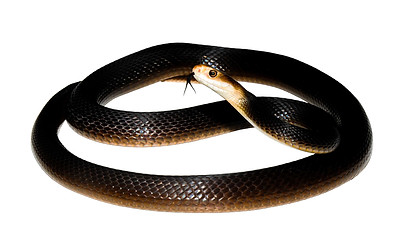
Coastal Taipans can reach approximately three meters in length and weigh in at 6.6kg. The Coastal Taipan's natural habitat is along the coastal regions of eastern and northern Australia and the island of New Guinea. The Coastal Taipan is the fifth most toxic snake in the world. The Coastal Taipan has the longest fangs (approx 12mm). Taipans are able to strike rapidly and repeatedly, with each bite containing venom. They deliver large quantities of venom in comparison to other Australian snakes. The venom of the Coastal Taipan is strongly neurotoxic, with prothrombin activity as well as myotoxic and weakly haemolytic. The Coastal Taipan's venom is able kill a healthy adult human within 30mins - 2.5hrs after a lethal bite if left untreated. Without medical treatment the mortality rate from a coastal taipan bite is nearly 100%. The venom quickly spreads in the nervous system and also the blood. Side effects can be headaches,nausea and vomiting, convulsions, paralysis, internal bleeding and severe muscle and kidney damage.
A large and extremely intelligent snake, it can lash out when surprised,cornered or feeling threatened and injects a decent amount venom deep into the flesh in as little as two or three bites, however, these snakes tend to avoid confrontation and will escape whenever possible. This species is the most dangerous snake in Australia and a serious contender for the world's most dangerous snake.
Coastal Taipan
Oxyuranus scutellatus
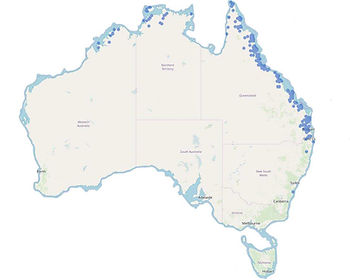
Also known as the Eastern Taipan, Giant Brown Snake
Tiger Snake

Notechis scutatus
All Tiger Snakes have been included in this short summary. Tiger Snakes vary in size greatly - some populations can be as small as 100cms in length and some populations can reach approximately 220cms in length. Tiger Snakes range all over southern Australia and some islands. Queensland (Common Tiger Snake), New South Wales (Common Tiger Snake), Victoria (Common Tiger Snake), South Australia (Common Tiger Snake, Krefft's Tiger Snake, Peninsula Tiger Snake), Western Australia (Western Tiger Snake), Tasmania (Tasmanian Tiger Snake, Chappell Island Tiger Snake). The Tiger Snake is the tenth most toxic snake in the world. The Tiger Snake has a fang length of approx 5mm. Tiger Snakes are able to strike rapidly and repeatedly when cornered, but will try to avoid human contact. The venom of the Tiger Snake is strongly neurotoxic, with powerful coagulants and weakly haemolytic and cytotoxic. The Tiger Snake is among one of Australia's most dangerous snakes. Before antivenom was available many people died from their bite. The venom quickly effects the nervous system and the blood. Side effects can include the bite site swelling, headache, vomiting, drowsiness, blurred vision/difficulty seeing, eyelid drooping, difficulty speaking or swallowing, stumbling gait, localized tissue death, black urine, loss of consciousness and respiratory arrest.


Peninsula Brown Snake
Pseudonaja inframacula
Peninsula Brown Snakes can reach approximately 160cms in length and weigh in at 1.1kg. The Peninsula Brown Snake are found on the southern end of the Yorke and the Eyre Peninsulas of South Australia. There is also an isolated population on the Nullarbor Plain. The Peninsula Brown Snake is the twenty-third most venomous snake in the world. These snakes tend to avoid confrontation and will escape whenever possible, but if cornered will strike-often repeatedly before attempting to flee. They don't deliver large quantities of venom in comparison to other Australian snakes. It is a complex venom containing neurotoxins and post-synaptic neurotoxins. Brown snake venom can rarely cause extremely rapid death in people- in as little as 25 minutes, however there has not been a recorded death from a Peninsula Brown Snake. The venom effects both the circulatory and nervous systems. Symptoms of envenomation may include headaches, nausea and vomiting, convulsions, paralysis, internal bleeding and severe muscle and kidney damage.
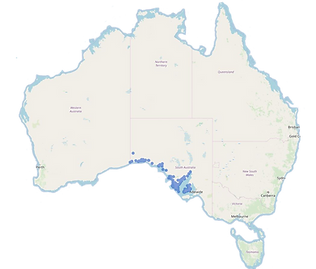
Peninsula Brown photo courtesy of Shawn Scott.
